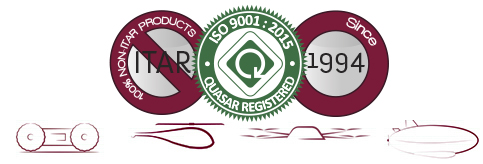|
|
| |
| |
|
| How many UAVs can the HORIZONmp control simultaneously? |
| There is no technical limit to the number of UAVs that can be controlled. To be practical, you probably wouldn't want more than a dozen operating at any one time. |
| |
| Back to top |
| |
| |
|
| Do these UAVs share the same datalink? |
| They can share the same datalink, or they can use separate datalinks or some combination of both. |
| |
| Back to top |
| |
| |
|
| What is a software-in-the-loop-simulator, and why is it important? |
| A software-in-the-loop simulation is a simulation of the autopilot where the autopilot code is linked to a flight simulator and the entire system runs on a single computer. HORIZONmp has a built-in software in the loop simulator of the MP2x28, MP2128, and MP2128heli autopilots. It is important to have this capability for two reasons: First, it is vital for your autopilot vendor to have this capability, as it is not possible to properly test autopilot software without it; second, it provides a valuable training tool, and allows our customers to learn about HORIZONmp and the autopilot on the ground without actually having to fly. |
| |
| Back to top |
| |
| |
|
| What is a quasi hardware in the loop simulator? |
| A quasi-hardware in the loop simulator is one where the autopilot software runs on the autopilot software and the simulator runs on a separate computer (usually a Windows PC). Sensor data and control surface deflection information are exchanged between the autopilot and the simulator via some communications mechanism-usually a serial port or CAN bus. |
| |
| The autopilot is not running exactly the same code as it would normally execute because, rather than reading values from its various sensors (gyros, accelerometers, pressure sensors), it is reading this data from the serial port/CAN bus. The result is that this type of simulation, while valuable, is imperfect because the communication mechanism introduces delays that wouldn't be present in the real autopilot, and because the autopilot executes different code than it does in flight. |
| |
| Back to top |
| |
| |
|
| What is a true hardware-in-the-loop simulator, and what is the difference between a quasi-hardware-in-the-loop simulator and a true hardware-in-the-loop simulator? |
| A true hardware-in-the-loop simulator is similar to the quasi-hardware-in-the-loop simulator in that the autopilot software runs on the autopilot hardware and the simulator runs on a separate PC. They differ in the way the sensor values and the control surface deflections are communicated between the autopilot and the simulator.
|
| |
| In the true hardware-in-the-loop simulator, the autopilot has the sensors removed and the simulator generates sensor values using digital-to-analog converters connected to the autopilot. The control surface positions are read by the simulator directly from the autopilot output using a pulse width modulator (PWM) interface board in the PC (most servos for small UAVs are controlled using PWM signals).
|
| |
| The advantage of the true hardware in the loop simulator is that it offers the best of simulation fidelity available. There are no delays introduced by transmitting sensor values. Since the simulator generates the actual sensor signals, the autopilot software is identical to the software used in actual flight. |
| |
| Back to top |
| |
| |
|
| What is camera pointing? | |
| Camera pointing is when the autopilot forces the camera to point at a particular location on the ground continuously. |
| |
| Back to top |
| |
| |
|
| What is fly-by camera? |
| Fly-by-camera is a mode where the autopilot flies towards the location where you are pointing the camera. This is useful if you are following a moving vehicle. |
| |
| Back to top |
| |
| |
|
| What is orbit by camera? |
| This is a mode where you orbit around a point, and the autopilot keeps the center of the orbit on the point where your camera focuses on the ground. |
| |
| Back to top |
| |
| |
|
| What is DEM, and how does HORIZONmp use DEM? |
| Digital terrain elevation data (also known as DTED or DTM) is used by HORIZONmp to: |
| |
- display the safe operating range
- provide a flight profile showing terrain clearance
- calculate the maximum line-of-sight operating range
- provide terrain conflict warnings
|
| |
| Back to top |
| |



